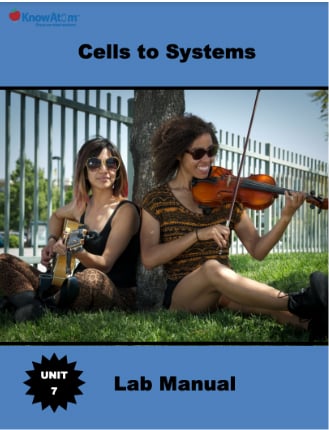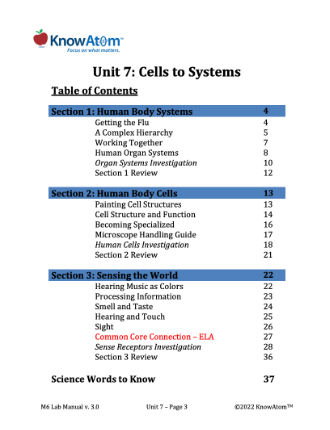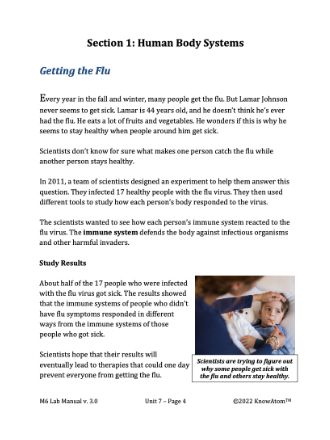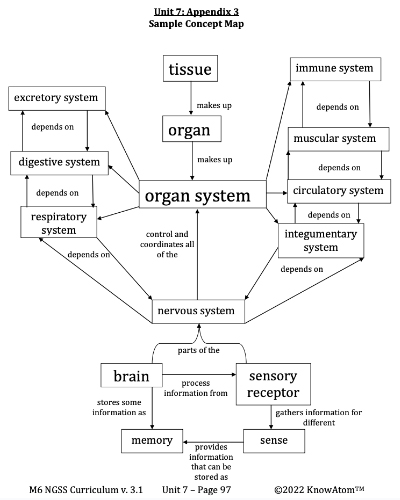Science background provides teachers with more in-depth information on the phenomena students explore in this unit. Below is an excerpt of the science background information from this lesson on the nervous system and senses.
Neurons and the Nervous System
Neurons are some of the most highly specialized cells in the human body. Their job is to carry messages throughout the body, making muscles move, responding to the environment, and communicating with the entire body. Neurons have long, threadlike branches that allow cells to receive and transmit messages throughout the body. The human body has billions of neurons, which you have had since before you were born.
Neurons are part of the nervous system, as are the brain and spinal cord. The brain is the part of the body that interprets all of the information the senses receive. A sense is how animals get information about the outside world. The five most well-known human senses are sight, hearing, touch, taste, and smell, but the ability to balance and sense temperature changes are also senses. The nervous system takes in information through the senses, processes the information, and then produces a reaction, such as making your muscles move or causing you to feel pain.
Your body gathers information from the environment with structures called sensory receptors that are specialized to detect stimuli. A stimulus is a signal from the environment that provides some form of information.
Some sensory receptors are simple nerve endings. These sensory receptors are part of a sensory neuron. Others are entire sense organs, which are made up of nervous tissue and other kinds of tissue, depending on the kind of sense organ it is. The nose, eyes, ears, and mouth are all sense organs. These sense organs transmit information to sensory neurons through nerve impulses.
Senses and Memory
Sensory neurons then send the nerve impulses from the receptors to the spinal cord and then to the brain. The brain interprets the information to make sense of the environment at that moment. The information can also be stored as memories. Memory is the process of retaining information over time.
Other Senses and Sensory Receptors
Smell is a sense that depends on chemoreceptors. In humans, these receptors are found in the nose. Odors are made up of different molecules. When these molecules reach the chemoreceptors in your nose, certain neurons are activated and they communicate the information with the brain, which interprets the information as a specific smell.
Sometimes a specific smell can bring to mind a particular person or place. This is because the part of the brain that receives information from chemoreceptors in the nose is closely connected to the part of the brain responsible for emotions and memory.
Some sensory receptors are called mechanoreceptors, and they respond to mechanical forces in the environment. These forces physically change the shape of a cell or tissue such as by vibration, touch, or pressure.
For example, when an object makes a noise, it sends vibrations through the air. There are many different kinds of sounds, but all sounds make vibrations. These vibrations move through the different parts of your ear, and this is how you hear sound.
Touch is another sense that relies on mechanoreceptors. Your skin has many sensory neurons that can detect touch, but the number of these touch receptors depends on the location and the need for precision in touch. For example, your back has a lower density of touch receptors than other parts of your body. This means that one neuron covers a relatively large area. Any touch that occurs within that one neuron’s area will trigger the same neuron. If your back is touched in two different places within one neuron’s area, it will feel like a single touch.
This isn’t true with your fingertips because they have a high density of touch receptors. This means there are more neurons packed within a smaller space. As a result, you will feel separate touches within a much smaller area.










